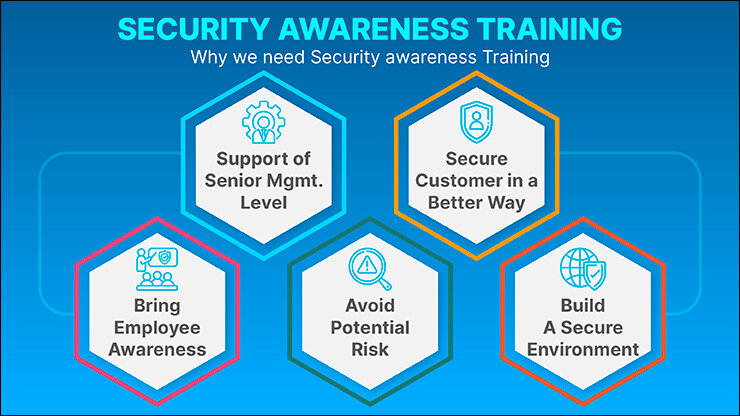Fortifying your cybersecurity defenses demands more than technology; it requires empowering your greatest asset, your people. Discover why security awareness training is a critical investment for every organization.
In cybersecurity, technological solutions alone are insufficient to fortify an organization’s defenses. The human element remains a crucial factor – one that can either strengthen or compromise even the most robust security measures. Why? Because people, with their inherent curiosities, biases, and susceptibilities, represent a potential gateway for cyber threats.

A Single Lapse Can Cause Catastrophe
Consider this. An organization spends a lot on security equipment, firewalls, and other security measures such as encryption. However, one employee falls for a sophisticated phishing message and ends up providing hackers with the keys to the kingdom. Or an employee frustrated by perceived injustices deliberately spills corporate information or compromises networks. The consequences? Loss of revenue, product piracy, fines, and loss of customer confidence and trust.
Security-Conscious Culture
It is crucial to develop a security-oriented culture in an organization. First, the employees need to grasp the danger of cyber threats and their part in dealing with them. This type of understanding cannot be attained by policy circulation or single information sharing events. It involves a consistent, always-on approach that speaks to employees in a meaningful way.

Enter: Security Awareness Training
From identifying phishing scams and social engineering tricks to following guidelines when dealing with corporate data, these programs enable people to embrace their roles as guardians of the organization’s security.
Tailored and Inclusive Approach
Security awareness training does not have a one-stop solution to it. It has to be specific to the nature of work, the tasks, and duties of different groups and sectors. For example, employees who work directly with customers and their information are trained differently from IT or finance employees. The information provided is tailored to meet the needs of the clients, and this increases the impact.
However, training should be flexible, meeting the needs of all the trainees in terms of how they learn. Activity-based approach, games, role-play, case studies, and practical examples can enhance the understanding and retention of the materials.

Continuous Learning and Reinforcement
Security threats are dynamic and, therefore, require constant training and reminders. Cyber risks are dynamic, and a one-time training session is not sufficient in protecting an organization. Companies should maintain an ongoing process for their employees to remind them of new risks, new standards, and fresh policies.
Short, focused online courses, anti-phishing campaigns, and ongoing security messages can also assist the workforce in staying aware and not grow complacent.
Empowering a Speak-Up Culture
It is equally important to foster a culture of speaking up. It should also be noted that employees should be free to report any suspicious activity, possible risks, or concerns to the management without being penalized for it. People are encouraged to play an active role in the identification and prevention of security threats, thereby maintaining security within the organization.

Measuring Success and Continuous Improvement
Security awareness training is an ongoing process and not a single event and should be re-evaluated and adapted regularly. Administering quizzes and knowledge assessments can be used to evaluate the performance of the program and areas that require improvement.
Analyzing data may help to adjust the content and delivery and the training approach to keep the program effective, interesting, and pertinent to the organization’s security risks and requirements.
The Bottom Line
In cybersecurity, people are often viewed as the weakest link in the security chain; yet, they are the strongest asset. Incorporating advanced security awareness training is one of the best ways through which an organization can turn its employees into the defense line against cyber crimes. With knowledge, vigilance, and ownership, the employees are able to play an active role in protecting the organization’s most important assets.
The question here is not whether security awareness training is required – it is a tool that cannot be overlooked. The real question is this: Can your organization afford not to prioritize it?
In case you missed:
- Securing the Digital Transformation Journey: Cybersecurity Pitfalls to Avoid
- Data Classification and Risk Assessment: Foundations for Effective Data Protection
- Compliance and Data Protection: Navigating Complex Regulatory Landscapes
- Safeguarding Remote Workforce: Data Protection Measures
- AI-Powered Cybersecurity: How Machine Learning is Revolutionizing Threat Detection
- Supply Chain Attacks: Recognizing and Preventing Risks from Third Parties
- Common Data Protection Mistakes Businesses Must Avoid
- Data Management Techniques
- All about Ransomware
- Incident Response and Disaster Recovery: Preparing for the Worst-Case Scenario









